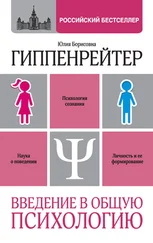Эллиот Аронсон - Общественное животное. Введение в социальную психологию
Здесь есть возможность читать онлайн «Эллиот Аронсон - Общественное животное. Введение в социальную психологию» весь текст электронной книги совершенно бесплатно (целиком полную версию без сокращений). В некоторых случаях можно слушать аудио, скачать через торрент в формате fb2 и присутствует краткое содержание. Жанр: Психология, на русском языке. Описание произведения, (предисловие) а так же отзывы посетителей доступны на портале библиотеки ЛибКат.
- Название:Общественное животное. Введение в социальную психологию
- Автор:
- Жанр:
- Год:неизвестен
- ISBN:нет данных
- Рейтинг книги:3 / 5. Голосов: 1
-
Избранное:Добавить в избранное
- Отзывы:
-
Ваша оценка:
- 60
- 1
- 2
- 3
- 4
- 5
Общественное животное. Введение в социальную психологию: краткое содержание, описание и аннотация
Предлагаем к чтению аннотацию, описание, краткое содержание или предисловие (зависит от того, что написал сам автор книги «Общественное животное. Введение в социальную психологию»). Если вы не нашли необходимую информацию о книге — напишите в комментариях, мы постараемся отыскать её.
Общественное животное. Введение в социальную психологию — читать онлайн бесплатно полную книгу (весь текст) целиком
Ниже представлен текст книги, разбитый по страницам. Система сохранения места последней прочитанной страницы, позволяет с удобством читать онлайн бесплатно книгу «Общественное животное. Введение в социальную психологию», без необходимости каждый раз заново искать на чём Вы остановились. Поставьте закладку, и сможете в любой момент перейти на страницу, на которой закончили чтение.
Интервал:
Закладка:
100. Desforges, D.M., Lord, C.G., Ramsey, S.L., Mason, J.A., Van Leeuwen, M.D., West, S.C., amp; Lepper, M.R. (1991). Effects of Structured Cooperative Contact on changing negative attitudes towards stigmatized social groups. Journal of Personality and Social Psychology, 60, 531-544.
101. Gaertner, S.L., Mann, J.A., Dovidio, J.F., Murrell, A. J., amp; Pomare, M. (1990). How does cooperation reduce intergroup bias? Journal of Personality and Social Psychology, 59,692-704.
102. Bridgeman, D. (1981). Enhanced role-taking through cooperative interdependence: A field study. Child Development, 52, 1231-1238.
103. Stephan, С., Kennedy, J., amp; Aronson, E. (1977). Attribution of luck or skill as a function of cooperating or competing with a friend or acquaintance. Sociometry, 40, 107-1 II. Presser, N., Stephan, C., Kennedy, J., amp; Aronson, E. (1978). Attributions to success and failure in cooperative, competitive, and interdependent interaction. European Journal of Social Psychology, 8, 269-274. Stephan, S., Burnhain, M., amp; Aronson, E. (1979). Attributions for success and failure after cooperation, competition, or team competition. European Journal of Social Psychology, 9, 109-114,
104. Slavin, R. (1990). Research on cooperative learning: Consensus and controversy. Educational Leadership, 52-54.
105. Kohn, A. (1986). No Contest. Boston: Houghton Mifflin.
106. McConahay, J.B. (1981). Reducing racial prejudice in desegregated schools. In W.D. Hawley (Ed.), Effective school desegregation. Beverly Hills, CA: Sage.
107. Gonzalez., A. (1979). Classroom cooperation and ethnic balance. Unpublished Ph.D. dissertation, University of California, Santa Cruz. Aronson, E., amp; Gonzalez., A. (1988). Desegregation, jigsaw and the Mexican-American experience. In P. Katz and D. Taylor, Eliminating Racism. New York: Plenum.
108. Pettigrew, T.F. (1961). Social psychology and desegregation research. American Psychologist, 15, 61-71.
1. Darwin, С. (1910). The expression of emotions in man and animals. New York: Appleton.
2. Carnegie, D. (1937). How to win friends and influence people. New York: Simon amp; Schuster. Рус. пер. - КарнегиДейл. Как завоевывать друзей и оказывать влияние на людей. М.: Прогресс, 1989.
3. Remmers, Н.Н., amp; Radler, D.H. (1958). Teenage attitudes. Scientific American, 198 (6), 25-29.
4. Lemmann, Т., amp; Solomon, R. (1952). Group characteristics as revealed in sociometric patterns and personality ratings. Sociometry, 15, 7-90.
5. Homans, G. (1961). Social behavior: Its elementary forms. New York: Harcourt, Brace and World.
6. Walster (Hatfleld), E., Aronson, V., Abrahams, D., amp; Rottman, L. (1966). Importance of physical attractiveness in dating behavior. Journal of Personality and Social Psychology, 5,508-516.
7. Буте, D. (1969). Attitudes and attraction. In L.Berkowitz (Ed.), Advances in experimental social psychology (Vol. 4). New York: Academic Press.
8. Sherif, М. (1956). Experiments in group conflict. Scientific American, 195, 53-58.
9. Aronson, E., Stephan, C., Sikes, J., Blaney, N., amp; Snapp, М. (1978). The jigsaw classroom. Beverly Hills, CA: Sage Publications. Aronson, E., amp; Osherow, N. (1980). Cooperation, prosocial behavior, and academic performance: Experiments in the desegregated classroom. In L. Bickman (Ed.), Appliedsocialpsychology annual (Vol. I, pp. 163-196). Beverly Hills, CA: Sage Publications.
10. Aronson, E., amp; Mills, J. (1959). The effect of severity of initiation on liking for agroup. Journal of Abnormal and Social Psychology, 59, 177-181.
11. Aronson, E., amp; Darwyn, L. (1965). Gain and loss of esteem as determinants of interpersonal attractiveness. Journal of Experimental Social Psychology, 1, 156-171. Aronson, E., amp; Worchel, P. (1966). Similarity versus liking as determinants of interpersonal attractiveness. Psychonomic Science, 5, 157-158. Sigall, H., amp; Aronson, E. (1969). Liking for an evaluator as a function of her physical attractiveness and nature of the evaluations. Journal of Experimental Social Psychology, 5, 93-100.
12. Amabile, Т. (1983). Brilliant but cruel: Perceptions of negative evaluators. Journal of Experimental Social Psychology, 19, 146-156.
13. Deutsch, М., amp; Solomon, L. (1959). Reactions to evaluations by others as influenced by self-evaluations. Sociometry, 22, 93-112.
14. Jones, E.E. (1964). Ingratiation. New York: Appleton-Century-Crofts.
15. Jennings, ff.H. (1959). Leadership and isolation (2nd ed.). New York: Longman, Green.
16. Lott, B., amp; Lott, A. (1960). The formation of positive attitudes toward group members. Journal of Abnormal and Social Psychology, 61, 297-300.
17. Brehm, J., amp; Cole, A. (1966). Effect of a favor which reduces freedom. Journal of Personality and Social Psychology, 3, 420-426.
18. Толстой Л. Н. (1863-69). Война и мир. М.: Художественная литература, 1968.
19. Bigelow, J. (Ed.). (1916). The autobiography of Benjamin Franklin (pp. 216- 217). New York: G.P. Putnam's Sons.
20. Jecker, J., amp; Landy, D. (1969). Liking a person as a function of doing him a favor. Human Relations, 22,371-378.
21. Lerner, М., amp; Simmons, С. (1966). Observer's reaction to the ‹innocent victim›: Compassion or rejection? Journal of Personality and Social Psychology, 4, 203-210.
22. Lott, A.J., Lott, B.E., Reed, T., amp; Crow,T. (1960). Personality-trait descriptions of differentially liked persons. Journal of Personality and Social Psychology, 16, 284-290.
23. Bales, R. (1958). Task roles and social roles in problem solving groups. In E.E. Maccoby, T.M. Newcomb, and E.L. Hartley (Eds.), Readings in social psychology (3rd ed., pp. 437-447). New York: Holt. Bales, R., amp; Slater, P. (1955). Role differentiation in small decision-making groups. In T. Parsons and R.F. Bales (Eds.), The family, socialization, and interaction process. Glencoe, IL: Free Press.
24. Aronson, E., Willerman, B., amp; Floyd, J. (1966). The effect of a pratfall on increasing interpersonal attractiveness. Psychonomic Science, 4, 227-228.
25. Deaux, К. (1972). To err is humanizing: But sex makes a difference. Representative Research in Social Psychology, 3, 20-28.
26. Aronson, E., Helmreich, R., amp; LeFan, J. (1970). To err is humanizing - sometimes: Effects of self-esteem, competence, and a pratfall on interpersonal attraction. Journal of Personality and Social Psychology, 16, 259-264.
27. Tesser, A., amp; Brodie, At. (1971). A note on the evaluation of a ‹computer date›. Psychonomic Science, 23,300.
28. Feingold, A. (1990). Gender differences in effects of physical attractiveness on romantic attraction: A comparison across Five research paradigms. Journal of Personality and Social Psychology, 59, 981-993.
29. Walster, Aronson, Abrahams, amp; Rottman, Importance of physical attractiveness.
30. White, G. (1980).Physical attractiveness and courtship progress. Journal of Personality and Social Psychology, 39, 660-668.
31. Dion, К., Berscheid, E., amp; Walsler(Hatfield), E. (1972). What is beautiful is good. Journal of Personality and Social Psychology, 24, 285-290.
32. Tan, A.S. (1979). TV beauty ads and role expectations of adolescent female viewers. Journalism Quarterly, 56, 283-288.
33. Dion, К., amp; Berscheid, Е. (1971). Physical attractiveness and sociometric choice in nursery school children. Mimeographed research report.
34. Dion, K. (1972). Physical attractiveness and evaluation of children's transgressions. Journal of Personality and Social Psychology, 24, 207-213. Похожие результаты сообщаются в: Berkowit^, L., amp; Frodi, А. (1979). Reactions to a child's mistakes as affected by her/his looks and speech. Social Psychology Quarterly, 42, 420-425.
Читать дальшеИнтервал:
Закладка:
Похожие книги на «Общественное животное. Введение в социальную психологию»
Представляем Вашему вниманию похожие книги на «Общественное животное. Введение в социальную психологию» списком для выбора. Мы отобрали схожую по названию и смыслу литературу в надежде предоставить читателям больше вариантов отыскать новые, интересные, ещё непрочитанные произведения.
Обсуждение, отзывы о книге «Общественное животное. Введение в социальную психологию» и просто собственные мнения читателей. Оставьте ваши комментарии, напишите, что Вы думаете о произведении, его смысле или главных героях. Укажите что конкретно понравилось, а что нет, и почему Вы так считаете.










